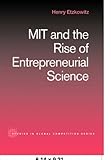On Sunday, the San Jose Mercury published a long article by Scott Duke Harris celebrating the 100h anniversary of the founding of Federal Telegraph and Telephone in Menlo Park. The article mentioned two other Stanford-related startups founded in the first half of the 20th century — HP [founded in 1937] and Varian Associates [1948] — as well as the familiar list of IT firms from the 1980s and 1990s.
Harris used this history to make a point about Stanford’s role in promoting high-tech entrepreneurial culture:
Stanford University's 100-year tradition of entrepreneurialism, which has spawned such tech giants as Hewlett-Packard, Cisco Systems and Google, has been recognized as a catalyst to Silicon Valley's emergence as the globe's pre-eminent tech hub.Alas, to quote Will Rogers, “It isn't what we don't know that gives us trouble, it's what we know that ain't so.”
OK, I’m a little biased here. I’m an MIT grad, active in the local MIT club, and onetime entrepreneur alum. I have been researching MIT-trained entrepreneurs as part of a book tentatively named From MIT to Qualcomm. There are also key Stanford rivalries, with strong personal and family ties to the UC system, and today teaching tech entrepreneurship in the shadow of the world’s second richest university. (Full disclosure: I was accepted by Stanford the only time I applied, as a high school senior).
And by no means do I want to minimize the role that Stanford has played in sparcing alumni (and faculty) entrepreneurship in Silicon Valley, starting with Cypress Semiconductor, Electronic Arts and Sun Microsystems in 1982, and extending through Cisco, Yahoo and Google (among many others). After benign neglect by the business school, Stanford’s engineering school has played an incomparable role in promoting technology entrepreneurship among students at Stanford and elsewhere, with efforts like the Stanford Technology Ventures Program and its free iTunes U podcasts.
However, after talking to Silicon Valley historian (and Palo Alto native) Stephen B. Adams, I believe claims of Stanford’s role in the early 20th century are greatly exaggerated. As Steve wrote me in an email responding to the Merc article:
The early start-ups (pre HP) did not take because the Valley lacked critical mass of high tech talent. Therefore, local firms such as Federal and Farnsworth moved to areas (New York/New Jersey and Philadelphia respectively) that already had clusters going. The 1939 Census of Manufacturing showed the same thing that Fred Terman later said: by then the Valley had fewer than 100 scientists and engineers in industry. Not exactly critical mass!In fact, there wasn’t much to HP until it wartime orders swelled its ranks to 200 employees, and it laid off more than half of those after the war.
 At best, Stanford’s role as an entrepreneurial incubator began when Fred Terman was appointed engineering dean in 1946, or when Stanford decided in 1951 to allocate some of its land to form the pioneering Stanford Industrial Park. Even in the 1970s, Stanford’s role in creating startups was not obvious. Shockley (and then Fairchild and Intel) put the “silicon” in Silicon Valley without direct ties to Stanford.
At best, Stanford’s role as an entrepreneurial incubator began when Fred Terman was appointed engineering dean in 1946, or when Stanford decided in 1951 to allocate some of its land to form the pioneering Stanford Industrial Park. Even in the 1970s, Stanford’s role in creating startups was not obvious. Shockley (and then Fairchild and Intel) put the “silicon” in Silicon Valley without direct ties to Stanford.Adams points out that Stanford was aggressively ahead of Berkeley for a very simple reason: without Berkeley’s ongoing support from Sacramento, Stanford badly needed the money. Necessity is the mother of invention.
 Which brings me to the other point. As Anna-Lee Saxenian documented in her 1994 book, Regional Advantage, Silicon Valley surpassed Route 128 in the 1980s and never looked back. Saxenian says it’s because of the valley’s open culture, but others argue that it’s because Boston bet on minicomputers while the Bay Area bet on PCs.
Which brings me to the other point. As Anna-Lee Saxenian documented in her 1994 book, Regional Advantage, Silicon Valley surpassed Route 128 in the 1980s and never looked back. Saxenian says it’s because of the valley’s open culture, but others argue that it’s because Boston bet on minicomputers while the Bay Area bet on PCs.However, in the period 1920-1970, there was no question which university was inspiring and fueling technological entrepreneurship: it was MIT.
Losing its land grant status and rejecting a proposed merger with Harvard, in the early 1920s MIT was scrambling to raise resources both for the Institute and for its faculty. (Remember, big Federal R&D spending started with WW II).
 During the interwar era, MIT invented its industrial cooperative program (allowing students like Andy Viterbi to work in real jobs to pay for their schooling). It also invented the now-standard consulting rubric used by all American research universities, the “one day a week rule.” This is well recounted by Henry Etzkowitz and his fascinating book, MIT and the Rise of Entrepreneurial Science.
During the interwar era, MIT invented its industrial cooperative program (allowing students like Andy Viterbi to work in real jobs to pay for their schooling). It also invented the now-standard consulting rubric used by all American research universities, the “one day a week rule.” This is well recounted by Henry Etzkowitz and his fascinating book, MIT and the Rise of Entrepreneurial Science.Through the end of the 1960s, MIT was also the world’s leading university in creating the field of electrical engineering and establishing computer science as an academic discipline. MIT has its own list of alumni- and faculty- (co)founded companies, with an impressive run of electronics-related startups from 1922-1985 in both Massachusetts and California that included Raytheon (co-founded in 1922 by Vannevar Bush), EG&G, BBN, TI, DEC, Bose, Lotus, PictureTel, 3Com, and Qualcomm. Among those launching its many Bay Area startups were the two men who put the Silicon in Silicon Valley: William Shockley and Robert Noyce.
By the way, where did Terman (son of a Stanford psychologist) learn his trade as a radio engineer? As one biographical article recounts:
Stanford’s own Electrical Engineering Department chairman told Terman that the biggest and best EE department in the country was at MIT. So in 1922 Terman joined a generation of promising EE graduate students on a pilgrimage to Cambridge.Due to health reasons, Terman returned to Stanford, but he spent 1941-1945 running the Harvard Radio Research Laboratory, an auxiliary to the much larger MIT Rad Lab.
At MIT, Fred undertook graduate study under Vannevar Bush. Fred earned his Doctorate Degree in electrical engineering in 1924, and having a fascination with all of the exciting events at MIT, Fred was to accept a teaching position there.
Today, both MIT and Stanford have exceptionally qualified faculty, undergraduate and graduate students in engineering and the sciences. MIT’s technical role remains strong, but certainly (as the Merc argues) Stanford has taken the lead in fostering tech startups. Stanford has a much better local environment for entrepreneurs, but it’s an open question whether that’s due to West Coast vs. East Coast cultural differences, the availability of VCs, or the wealth of successful entrepreneurs (and entrepreneurial wealth).
If MIT has been eclipsed by Stanford in firm creation, there’s no guarantee that the latter will remain pre-eminent indefinitely. Stanford’s main rival will not be Cal (or even MIT), but instead Tsinghua or the various campuses of IIT.
I don’t think it will happen right away: these other schools may be able to imitate Stanford’s talent, but it will be longer before than can replicate the ecosystem that lies in its back yard. So even if the Merc has the history garbled, the contemporary story of Stanford’s entrepreneurial success is true (at least for the time being).

![[feed]](http://photos1.blogger.com/x/blogger2/6971/993546936938810/1600/z/962294/gse_multipart3851.gif)
No comments:
Post a Comment